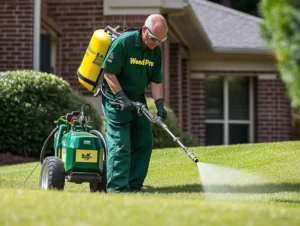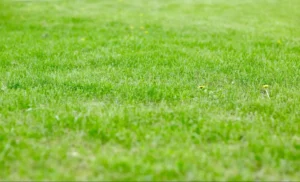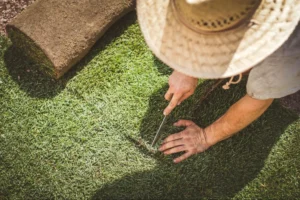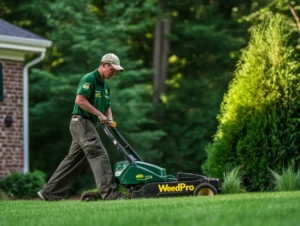Let’s play a little game. Is your Cumming lawn turning brown in weird patches? Are birds flocking to your yard like it’s a buffet? Are you seeing dirt mounds or thin turf overnight? If you nodded even once, you might have a pest control problem. Don’t panic—we’ve got your back (and your grass).
Pest controlin Cumming isn’t just about spraying chemicals and hoping for the best. It’s about knowing what signs to watch for, what bugs are causing the damage, and how to prevent a full-blown turf infestation before your lawn throws in the towel. From grub detection to spotting those sneaky mole crickets, this guide will walk you through how to catch the culprits before your grass pays the price.
What’s Bugging Your Lawn? Why Pest Control Matters
When your grass starts to look stressed or patchy for no clear reason, pest control should be one of the first things on your radar. Sure, drought or poor mowing habits can take a toll, but pests have a unique way of doing stealth damage—underground, overnight, and fast.
Unlike weather-related stress, insect damage to grass often starts in concentrated areas and spreads outward. And when left untreated, even a small infestation can wipe out entire sections of your turf.
Early Warning Signs of Lawn Pests in Cumming
How do you know it’s not just thirsty grass or compacted soil? Here are some red flags:
1. Brown Patches That Spread
If brown spots start small and expand rapidly, it could be more than dry soil. Brown patch causes often include root-feeding pests like grubs or fungal infections aided by insect activity.
2. Thinning Grass or Weak Root Structure
Try the tug test—grab a patch of turf and pull. If it lifts easily, roots may have been chewed through by larvae. Hello, larvae damage.
3. Increased Animal or Bird Activity
Are birds, raccoons, or armadillos digging up your lawn? They’re probably hunting for a snack—aka bugs. Pest problems attract predators.
4. Mysterious Mounds or Holes
Those cute little hills? They might not be so innocent. Fire ant mounds and mole cricket tunnels often appear overnight and signal serious problems below.
5. Unexplained Yellowing or Wilt
Some bugs suck sap from blades or stems, causing a faded or wilted look. This is especially common with chinchbugs and billbugs.
Know Your Enemy—Common Lawn Pests in Cumming
Let’s meet the not-so-welcome guests behind these turf crimes:
Grubs
The larvae of beetles and grubs munch on grassroots just beneath the surface. Peak season? Late summer to early fall. The result? Your lawn lifts up like a rug. You may need grub treatment.
Grub detection tip: Soak a square foot of lawn with water and pull back the turf—more than 10 grubs = trouble.
Armyworms
These surface feeders love to chew blades into oblivion. Damage appears suddenly and can spread across your lawn in days.
Look for: Ragged blades, frass (insect droppings), and visible caterpillars crawling in the early morning or evening.
Mole Crickets
These pests tunnel under the surface, severing roots and loosening soil. Turf becomes spongey and lifts easily.
Bonus tip: At dusk, pour a soapy water solution over a small area. If mole crickets surface—bingo.
Fire Ants
These ants aren’t just painful—they displace soil, kill grass, and ruin your lawn’s look. Their mounds often appear after heavy rain.
The Lifecycle of Lawn Pests—Why Timing is Everything
Pests follow seasonal patterns. If you treat at the wrong time, you’re wasting money and effort.
- Spring: Adults begin mating and laying eggs
- Summer: Eggs hatch, larvae feed aggressively
- Fall: Damage becomes visible as grass weakens
- Winter: Some pests go dormant or deeper underground
Understanding the pest lifecycle helps you time treatments like a pro. Want to hit them where it hurts? Apply chemical treatment options orpest control solutions just as eggs hatch—not after the damage is done.
Turf Inspection 101—How to Check for Infestation
Here’s how to DIY your own quick pest inspection:
- Visual Scan – Look for odd color changes, growth irregularities, and signs of animal digging
- Tug Test – Gently pull on patches of grass to check for loose roots
- Soap Flush Test – Mix 2 tablespoons of dish soap with 1 gallon of water and pour it in a square-foot area
- Bird Behavior – Increased pecking activity is often a sign of bugs beneath
Prevention Is Your Lawn’s Best Friend
You don’t need to wait for bugs to show up. Smart homeowners stop pests before they start with these pest prevention tips:
- Keep grass healthy and thick to crowd out pests
- Water deeply but infrequently to avoid soggy, pest-friendly turf
- Mow at proper heights to reduce stress and exposure
- Avoid thatch buildup—it’s a pest playground
- Aerate annually to boost soil health and reduce habitat
Think of prevention as lawn insurance. It costs a lot less than fixing a full-blown infestation. If you think you may need pest control service in Cumming, call the experts.
Organic vs. Chemical Pest Control—What’s Best for You?
When it comes to treating pests, you’ve got options:
Organic Pest Control
- Safer for pets and kids
- Uses natural oils or biological agents
- Works best with early detection and consistency
Chemical Treatments
- Stronger and faster-acting
- Better for large or advanced infestations
- Requires careful timing and application
A blended approach often works best.
Call Weed Pro for Pest Control that Works

Whether it’s a few too many grubs or a full-scale turf infestation, we’re here to help Cumming homeowners reclaim their lawns. With targeted pest control treatments and preventative strategies, we’ll make sure your turf stays lush, thick, and healthy all year long.
Say goodbye to mystery brown spots—and hello to a lawn you’ll love showing off.
FAQ: Beyond the Basics
How often should you schedule a professional pest inspection for your lawn?
It depends on your lawn’s history and condition. If you’ve had issues before, consider quarterly inspections—especially during spring and fall. For newer lawns or pest-resistant turf, a biannual checkup may be enough to catch early signs of trouble before they escalate.
Can pests be the reason your lawn isn’t responding to fertilizer or water?
Absolutely. If your lawn isn’t perking up after proper fertilization and watering, pests like grubs or mole crickets may be damaging the root zone. When roots are compromised, nutrients and moisture can’t reach the grass effectively, making your treatments less effective or completely useless.
Are there pest-resistant grass types you can plant in Cumming?
Yes! Certain grass varieties like Zoysia and Bermuda are more resistant to insect activity and disease. They’re especially useful in areas with persistent pest issues. Choosing the right type of grass, paired with healthy turf practices, can dramatically reduce future infestations.
👉 Next Up: Don’t Let Invasive Weeds Sneak In Either!
Now that you’re equipped to battle bugs, don’t let weeds become your next enemy. Check out our next post: “Weed Control in Cumming: How to Handle Invasive Species for Good.“ Your lawn deserves full protection—pests, weeds, and all!







